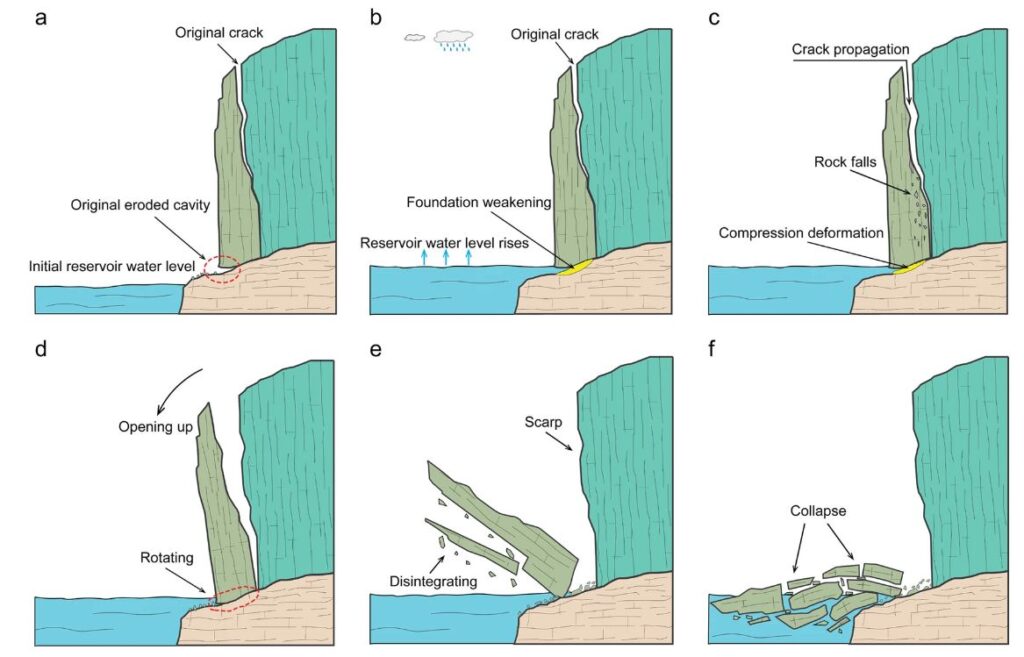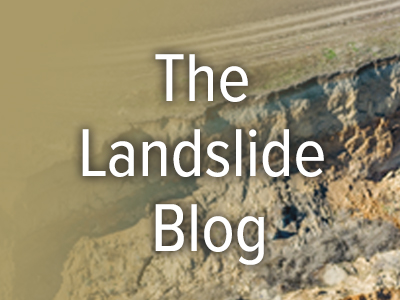The Landslide Blog is written by Dave Petley, who is widely recognized as a world leader in the study and management of landslides.
On 8 January 2022, a large rock topple occurred on the banks of the Furnas Reservoir in Brazil.
This event, which I wrote about at the time, was captured on a series of videos taken by people on boats on the reservoir, such as this one:-
The topple killed 10 people and injured a further 32 individuals.
A new paper in the journal Landslides (Sun et al. 2024) provides a very detailed and insightful review of this dreadful event. The work has included field investigations and numerical analyses, which provides insight into the processes of the failure. The paper provides this invaluable diagram, which summarises the main sequence of events:-

There are a number of things that are interesting about this failure. First, the volume is surprisingly small – just 332 m3.
Second, the key factor in the failure was erosion of the foundation of the rock column by the water in the reservoir, and compression of the unfailed mass at the base, allowed failure to develop.
And third, the final failure was triggered by heavy rainfall at a time when the column was a in critical state when the reservoir level was high.
The authors note that the rock column showed considerable precursory rockfall activity – and indeed the latter phases of this was caught in some of the videos.
Usefully, the authors point out some measures that could be taken to reduce the risk of such situations:-
“…it is emphasized that the existed cavities induced by the foundation erosion played a vital role in the formation of the toppling. Therefore, dealing with the eroded cavities could be an effective way in the prevention of cliff toppling in the Furnas Reservoir. For example, eroded cavities can be backfilled with masonry rubble and/or grouted to improve the support of the foundation for the overlying block… [C]ontrolled blasting can be used to remove the upper portion of the block so that the remaining portion would not be liable to undergo further toppling.”
Given the unacceptable rate of failures associated with landslides at large dams and reservoirs (Petley 2013), this is an extremely useful paper that provide genuine insight into the causes of one type of dangerous failure on reservoir banks.
References
Sun, S.W., Wen, Q., do Carmo Reis Cavalcanti, M. et al. 2024. Numerical and laboratory experiments on the toppling behavior of a massive single block: a case study of the Furnas Reservoir, Brazil. Landslides (2024). https://doi.org/10.1007/s10346-024-02288-8
Petley, D.N. 2013. Global losses from landslides associated with dams and reservoirs. In: Genevois, R. and Prestininzi, A. (eds) International Conference on Vajont – 1963-2013. Thoughts and analyses after 50 since the catastrophic landslide. Italian Journal of Engineering and Environment – Book Series N. 6, pp 63-72.



